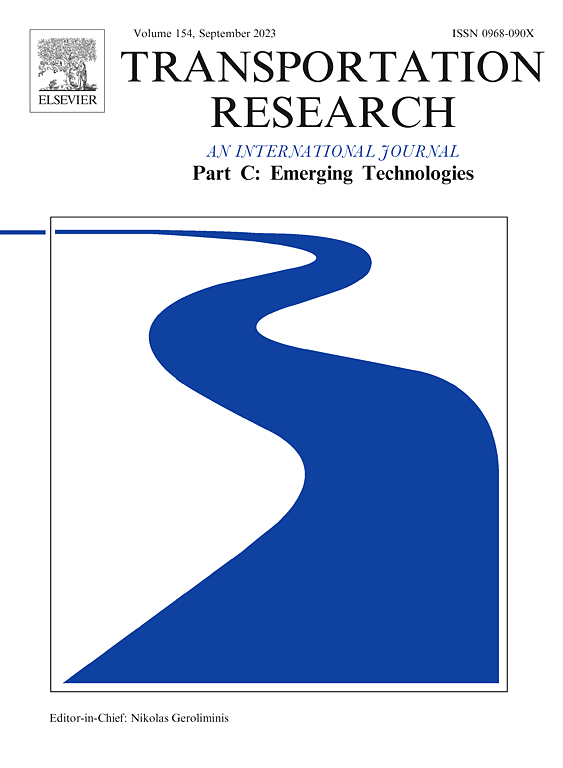On-demand ride-sharing with the walking incentive for meeting points
IF 7.6
1区 工程技术
Q1 TRANSPORTATION SCIENCE & TECHNOLOGY
Transportation Research Part C-Emerging Technologies
Pub Date : 2025-04-02
DOI:10.1016/j.trc.2025.105098
引用次数: 0
Abstract
The ride-sourcing market exhibits diverse travel demands, and travel platforms offer riders various service types. In such services, drivers usually need to travel sequentially to riders’ origins and destinations to provide door-to-door service, leading to longer travel times, especially when encountering road congestion or additional detours caused by one-way roads during pick-up or drop-off. Introducing meeting points into the mixed-demand pattern system can alleviate this problem. Assuming all riders exhibit the willingness to walk, the platform can implement incentive mechanisms to encourage walking to designated meeting points. Higher incentives can motivate riders to accept longer walking distances, thereby promoting sustainable mobility, enhancing system flexibility, and improving matching efficiency. However, offering high incentives may diminish system profits, necessitating a balanced optimization of incentive sizes. By screening the potential matching sets, two multi-objective optimization models with constant or optimized incentives are constructed with the objectives of maximizing the number of matched riders and total profit. Then, corresponding heuristic algorithms are designed to solve the model. Real-world-based results show that the introduction of constant walking incentives in the travel system increased the rider matching rate by an average of 4% and total profit by 3% across various travel scenarios. Conversely, matching under optimized incentives led to a 1.13% improvement in rider matching rate and a 1.27% increase in total profit compared to constant incentives. Introducing walking incentives provides higher system profits, superior rider service, and fewer vehicle dispatches and emissions. These findings can contribute to refining operational practices for on-demand ride-sourcing travel services.
求助全文
约1分钟内获得全文
求助全文
来源期刊
CiteScore
15.80
自引率
12.00%
发文量
332
审稿时长
64 days
期刊介绍:
Transportation Research: Part C (TR_C) is dedicated to showcasing high-quality, scholarly research that delves into the development, applications, and implications of transportation systems and emerging technologies. Our focus lies not solely on individual technologies, but rather on their broader implications for the planning, design, operation, control, maintenance, and rehabilitation of transportation systems, services, and components. In essence, the intellectual core of the journal revolves around the transportation aspect rather than the technology itself. We actively encourage the integration of quantitative methods from diverse fields such as operations research, control systems, complex networks, computer science, and artificial intelligence. Join us in exploring the intersection of transportation systems and emerging technologies to drive innovation and progress in the field.

 求助内容:
求助内容: 应助结果提醒方式:
应助结果提醒方式:


